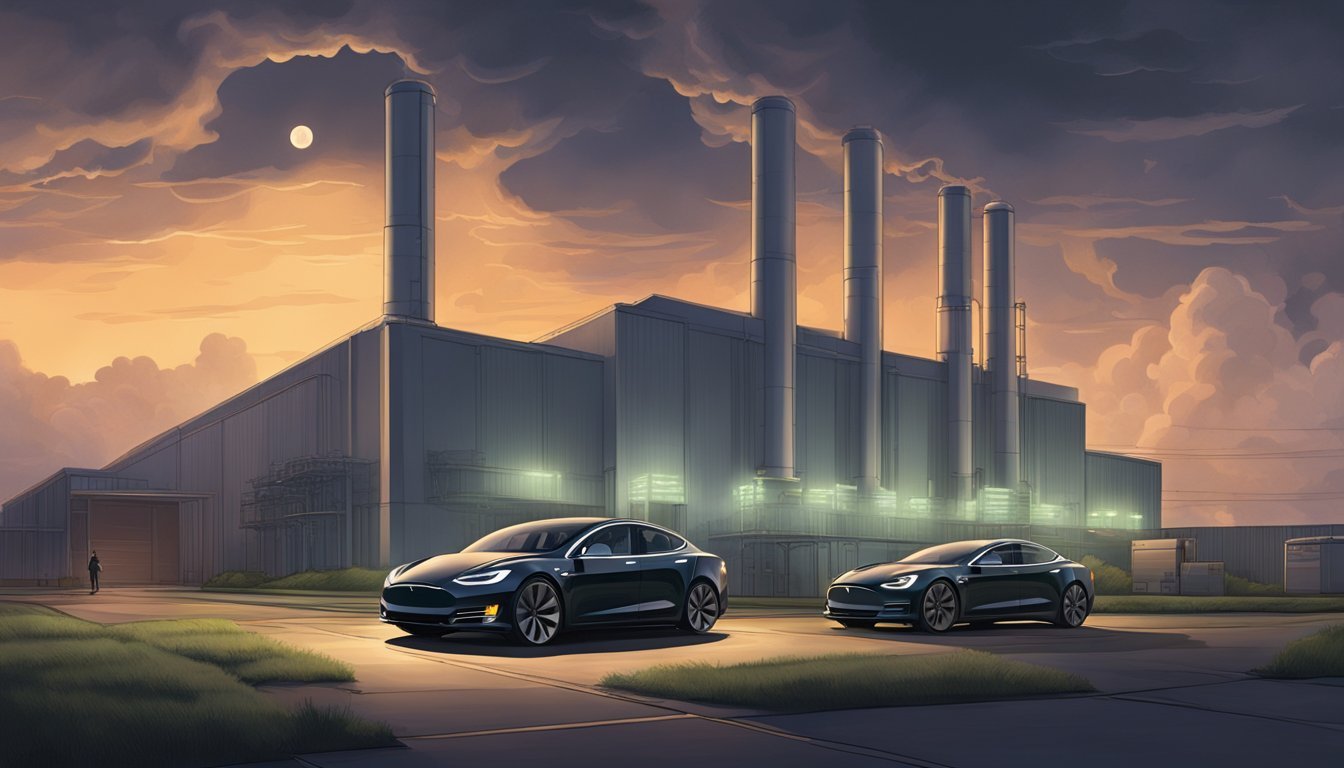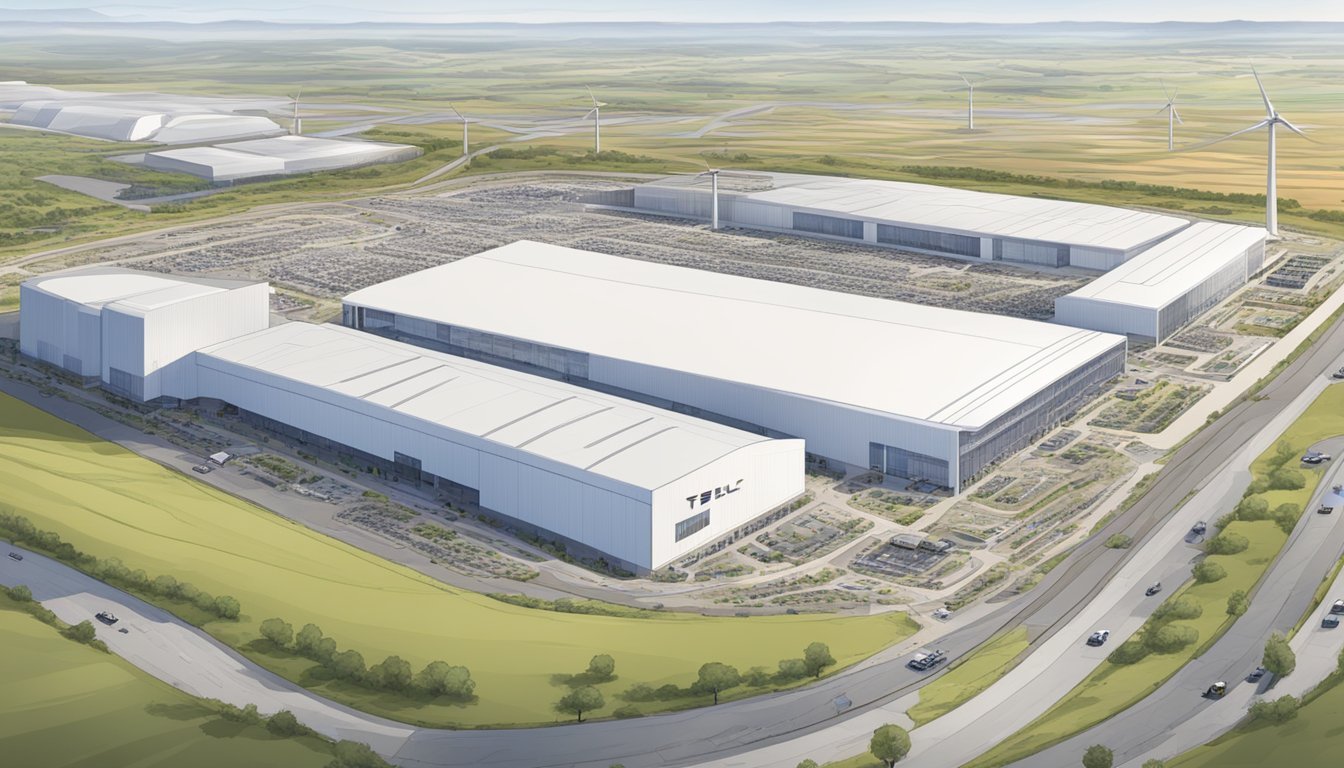Tesla Austin Factory Scare: False Alarm Sparks Massive Emergency Response!
The Tesla Gigafactory in Austin, Texas experienced a security scare in late 2022 when an "active attacker" alert was sent to workers. The incident prompted a large emergency response, but was quickly determined to be a false alarm. No actual threat was present, and normal operations resumed at the factory after authorities investigated.
Tesla's Austin facility has faced other safety concerns since opening in early 2022. Reports of workplace injuries have emerged, including incidents involving robotic equipment and machinery. The Travis County Sheriff's Office has responded to multiple "terroristic threat" reports at the site, highlighting ongoing security challenges.
These events have drawn attention to safety protocols and working conditions at Tesla's newest U.S. manufacturing plant. They also underscore the complexities of managing a large industrial facility with advanced automation and thousands of employees. Tesla continues to address these issues as it ramps up production at the Austin Gigafactory.
Background on Tesla's Austin Gigafactory
Tesla's Gigafactory in Austin, Texas represents a major investment and manufacturing hub for the electric vehicle company. The massive facility plays a crucial role in Tesla's production capacity and economic impact in the region.
Tesla's Investment in Austin
Tesla broke ground on the Austin Gigafactory in July 2020. The facility spans over 2,500 acres along the Colorado River. It boasts over 10 million square feet of factory floor space, making it one of Tesla's largest manufacturing sites.
The company invested billions of dollars to construct the state-of-the-art facility. Tesla chose Austin for its business-friendly environment and available workforce. The Gigafactory serves as Tesla's global headquarters and U.S. manufacturing hub.
Significance of the Gigafactory in Texas
The Austin Gigafactory is vital to Tesla's production goals and expansion plans. It manufactures the popular Model Y electric SUV. The facility is also slated to produce the highly anticipated Cybertruck.
For Texas, the Gigafactory brings thousands of jobs and significant economic benefits. It enhances the state's growing reputation as a tech and manufacturing powerhouse. The factory's advanced production methods could influence the broader automotive industry.
Tesla's presence attracts suppliers and other businesses to the area. This creates a ripple effect of economic growth and innovation throughout the region.
Details of the Incident
The Tesla Gigafactory in Austin, Texas experienced a brief scare when an active shooter alert was issued. The incident unfolded rapidly, involving multiple agencies and causing momentary panic before being declared a false alarm.
Timeline of Events
At approximately 4:15 PM on December 10, 2024, employees at the Tesla Gigafactory received an alert on their phones warning of an active attacker on site. The message triggered immediate concern and confusion among workers.
Within minutes, employees began evacuating the facility. Security personnel initiated lockdown procedures in certain areas of the massive factory complex.
By 4:30 PM, local news outlets started reporting on the developing situation, amplifying public awareness and concern.
Initial 911 Call
At 4:18 PM, the Travis County Sheriff's Office received a 911 call from a Tesla employee reporting a possible active shooter at the Gigafactory. The caller described hearing what sounded like gunshots and seeing people running.
Dispatchers immediately categorized the call as high priority and alerted all available units. They also contacted nearby law enforcement agencies for assistance.
The 911 operator kept the caller on the line, gathering additional details about the layout of the facility and potential locations of the reported threat.
Law Enforcement Response
Travis County Sheriff's deputies arrived on scene at 4:24 PM, establishing a perimeter around the Gigafactory. SWAT teams were mobilized and began staging nearby.
Austin Police Department officers joined the response, assisting with traffic control and evacuation efforts. Texas Department of Public Safety troopers also responded to provide support.
Law enforcement conducted a methodical sweep of the facility, clearing buildings and searching for any signs of an active threat. K-9 units were deployed to assist in the search.
False Alarm Declaration
At 5:45 PM, after a thorough search of the premises, law enforcement officials determined there was no active threat at the Gigafactory. The incident was declared a false alarm.
Investigators discovered that a malfunctioning piece of equipment had produced loud noises, which were mistaken for gunshots by some employees.
Tesla management and local authorities held a joint press conference at 6:30 PM to inform the public about the false alarm. They emphasized that there were no injuries or casualties during the incident.
Response and Safety Procedures
Tesla's Austin Gigafactory implemented emergency protocols during the active attacker scare. Employees took cover and evacuated as instructed. The incident highlighted the importance of preparedness and clear communication in crisis situations.
Tesla's Emergency Protocols
Tesla maintains strict safety protocols at its Austin Gigafactory. The company's emergency response plan includes procedures for various scenarios, including active attacker situations. Tesla's security team works closely with local law enforcement to ensure rapid response capabilities.
Emergency alarms and notification systems are in place to alert workers quickly. Designated safety personnel receive specialized training to guide employees during crises. Regular drills help familiarize staff with evacuation routes and safe areas within the facility.
Employee Take Cover Actions
When the active attacker alert was issued, employees followed take cover procedures. Workers sought shelter in designated safe rooms or behind sturdy objects. Some employees barricaded doors and silenced electronic devices to avoid detection.
Staff members assisted colleagues with mobility issues to reach secure locations. Employees remained in their sheltered positions until further instructions were provided by security or law enforcement.
Evacuation and Lockdown
As the situation developed, Tesla initiated a full evacuation of the Gigafactory. Employees exited the building using predetermined evacuation routes. Security personnel directed workers to designated assembly points away from the facility.
Law enforcement arrived on scene to secure the perimeter. The factory went into lockdown mode, with access restricted to emergency responders. Employees were instructed not to return to the building until authorities declared the area safe.
Tesla's crisis management team coordinated with police to account for all personnel. The company set up a hotline for worried family members seeking information about their loved ones.
Legal and Community Impact
Tesla's Austin Gigafactory faces scrutiny from law enforcement and local residents due to alleged environmental violations. The situation has sparked concerns about workplace safety and potential health risks in the surrounding area.
Law Enforcement Presence
The Environmental Protection Agency (EPA) has initiated a criminal investigation into Tesla's Austin Gigafactory. This probe follows reports of environmental infractions, including the release of untreated chemicals into Austin's sewer system. Local authorities have increased their presence around the facility to monitor activities and ensure compliance with regulations.
Law enforcement officials are working closely with environmental experts to assess the full extent of the violations. They are conducting regular inspections and collecting evidence to support potential legal action against the company.
Impact on Local Community
Residents near Tesla Road and the Austin Gigafactory have expressed growing unease about the facility's operations. Reports of toxic pollutants entering local water sources have raised alarm among community members. Many are concerned about potential long-term health effects and the impact on property values.
Local environmental groups have organized community meetings to discuss the situation. They are pushing for increased transparency from Tesla and demanding more rigorous oversight from regulatory bodies. Some residents have reported unusual odors and water discoloration, prompting calls for comprehensive environmental testing in the area.
The controversy has also affected Tesla's reputation as an employer in the region. Job seekers are reconsidering opportunities at the Gigafactory due to safety concerns and reports of a challenging work environment.
Future Measures and Recommendations
Tesla's Austin Gigafactory requires enhanced security protocols and improved emergency communication systems. These measures aim to address safety concerns and minimize potential risks for workers and the facility.
Strengthening Factory Security
Tesla must implement stricter access control measures at the Austin Gigafactory. This includes installing advanced biometric scanners and reinforcing perimeter fencing. Security personnel should undergo specialized training to handle potential threats effectively.
The company should also invest in state-of-the-art surveillance systems. High-resolution cameras and motion sensors can monitor critical areas 24/7. Regular security audits will help identify vulnerabilities and ensure compliance with safety standards.
Tesla needs to establish clear protocols for handling hazardous materials. Proper storage, labeling, and disposal procedures must be strictly enforced. Workers should receive comprehensive training on safety protocols and the use of protective equipment.
Improving Emergency Communication
Tesla should implement a multi-channel emergency notification system at the Austin Gigafactory. This system can include sirens, digital displays, and push notifications to workers' mobile devices.
Regular emergency drills are essential to familiarize workers with evacuation procedures. These drills should simulate various scenarios, including chemical spills, fires, and equipment malfunctions.
The company must establish a dedicated emergency response team. This team should be trained in first aid, firefighting, and hazardous material handling. Clear communication channels between this team and local emergency services are crucial for rapid response.
Tesla should also create a centralized incident reporting system. This allows workers to easily report safety concerns or near-miss incidents. Management can use this data to identify patterns and implement preventive measures proactively.






